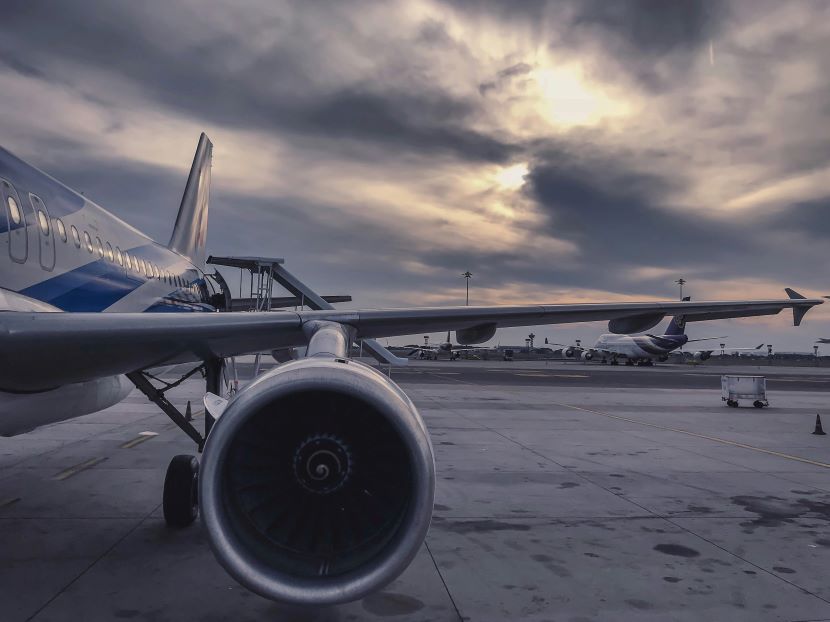Salt Lake City And Lima Air Connectivity Set To Fuel Tourism Growth As Delta Airlines Expands To Peru
Peru expands air connectivity with Delta’s new nonstop Salt Lake City–Lima route, boosting tourism, economy, and regional hub growth.
As part of broader government efforts aimed at improvingair connectivityand positioning Peru as a regional hub in Latin America,Foreign Trade and Tourism Minister Desilu Leonunderscored the significance of a newly authorized flight route connectingSalt Lake City (Utah) and Lima. This nonstop service, operated byDelta Air Linesand beginning onDecember 4, 2025, was officially authorized by theMinistry of Transportation and Communications (MTC).
This development is being hailed as a milestone because it will serve as the only direct connection between these two destinations. Salt Lake City, as the largest urban center in Utah and a city with a growing economic and cultural profile, is projected to send more travelers to Peru. From Lima, these visitors will have direct access to Peru’s most celebrated cultural and natural landmarks, including Cusco, Machu Picchu, and Arequipa.
Expanding Opportunities for Inbound Tourism
According to Minister Leon, the establishment of this nonstop flight will not only bring more international visitors to Peru but will also stimulate broader economic activity across multiple regions of the country. Tourism has long been a driver of growth, generating employment, foreign exchange revenue, and opportunities for local entrepreneurs.
With this new air bridge from the United States, the expectation is that inbound tourism will grow, which can translate into higher hotel occupancy rates, increased demand for guided tours, and greater consumption at local restaurants and markets. It is viewed as an opportunity to reinforce Peru’s reputation as one of South America’s leading tourist destinations.
The Role of U.S. Travelers in Peru’s Tourism Strategy
A key factor identified by the Minister is the spending pattern of U.S. visitors. North American travelers are recognized for their higher-than-average expenditure when abroad and their strong rate of returning to favorite destinations. By connecting Salt Lake City directly with Lima, Peru is poised to draw in a demographic of visitors known for contributing significantly to tourism-driven economies.
The government is also advancing a strategic initiative known as thestopover policy, which allows international visitors to extend their stay in Lima before continuing on to other destinations in South America. This approach encourages longer visits within Peru, further raising spending in sectors such as hospitality, dining, shopping, and local tour services.
Peru as a Regional Air Hub
The opening of the Salt Lake City–Lima connection has also been described as a step toward consolidatingJorge Chavez International Airportin Lima as a regional hub for international air traffic. With growing passenger flows and expanded connectivity, Jorge Chavez has been positioned by government authorities as Peru’s gateway to the continent.
By strengthening this status, Peru is seeking to compete with regional hubs in cities such as Santiago, Bogotá, and Panama City. The presence of new direct routes not only benefits inbound tourism but also enhances business travel andMICE tourism(meetings, incentives, conferences, and exhibitions). This dual focus helps diversify the travel market, ensuring that Peru benefits from both leisure and corporate segments.
The Aircraft and Capacity
Delta Air Lines has announced that the new connection will utilize theBoeing 767-300ER, an aircraft equipped with four different cabin types. This will allow the airline to cater effectively to various traveler profiles, from corporate passengers to tourists seeking comfortable long-haul journeys. The airline is expected to operate up to seven weekly frequencies, offering regular service that ensures connectivity is consistent throughout the year.
Such capacity is seen as a critical element in guaranteeing that the route can accommodate not only seasonal tourism demand but also year-round travel related to business, conferences, and academic exchanges.
Broader International Expansion
The Ministry of Foreign Trade and Tourism (Mincetur) has reaffirmed its ongoing commitment to strengthening Peru’s international reach by supporting the launch of additional new routes. In the months ahead, Lima will expand its connectivity with several destinations highly relevant to both leisure and business travelers.
Upcoming routes includeLima–Orlando, Lima–Curaçao, Lima–Florianopolis, Lima–Tucuman, Lima–Montreal, Lima–Toronto, and Lima–Iguazu. Scheduled to launch between late 2025 and early 2026, these connections are considered vital in strengthening Peru’s positioning as an accessible and competitive travel hub in the region.
Impact on Regional Development
The significance of expanding international connectivity goes beyond Lima itself. Many of Peru’s tourism-driven regions stand to benefit directly from increased air traffic. Cities such as Cusco, Arequipa, and Puno, as well as the country’s northern beaches and Amazonian destinations, are more accessible when Lima serves as their connecting hub.
Minister Leon emphasized how stronger tourism flows can stimulate local economies by creating jobs in transportation, accommodation, gastronomy, artisanal production, and community-led tourism initiatives. This cascade of benefits is viewed as essential for more inclusive economic growth.
Connectivity as National Policy
Tourism development and improved air links are being framed as aligned elements of national policy. The Peruvian government has placed tourism recovery, following recent economic challenges, as a high priority, and international connectivity has been identified as one of the most effective ways to accelerate that process.
By leveraging international routes, policymakers see opportunities to generate sustainable revenue, attract investments, and reinforce partnerships with major airlines. The result is not only economic growth but also greater visibility for Peru as a modern, competitive, and interconnected destination in South America.
Looking Ahead
The launch of the Salt Lake City–Lima route underscores the important intersection of global mobility, international business, and cultural exchange. For Peru, this milestone represents far more than the introduction of a single flight—it is part of a broader vision aimed at advancing the country’s long-term tourism and economic strategy.
Whether through leisure travel to Machu Picchu, business connections in Lima, or regional stopovers en route to other South American capitals, the new Delta Air Lines route is expected to play a pivotal role in shaping the country’s international footprint over the coming years.
The post Salt Lake City And Lima Air Connectivity Set To Fuel Tourism Growth As Delta Airlines Expands To Peru appeared first on Travel and Tour World


Comments and Responses
Please login. Only community members can comment.